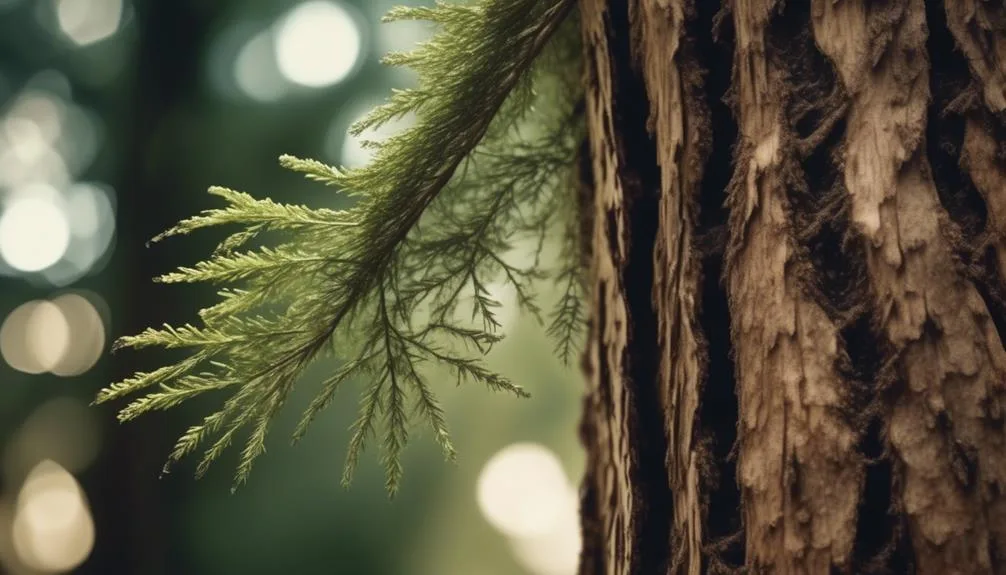Imagine the grand cedar tree, standing tall and strong. Yet, hidden pests could be causing damage. Understanding how to spot and manage these pests is vital for the tree's well-being.
This article will guide you through identifying and controlling cedar tree pests, offering valuable insights to protect these majestic trees.
Stay tuned to learn more about safeguarding the health and longevity of your cedar trees.
Common Pests Affecting Cedar Trees
If you're wondering which pests pose a threat to your cedar trees, look no further – we'll explore the common culprits and how to identify and control them.
Pest identification is crucial for effective pest control. One common pest affecting cedar trees is the cedar bark beetle. These tiny insects can cause extensive damage by burrowing into the tree's bark, leading to wilting and dieback of branches.
Another common pest is the cedar leaf miner. These small larvae feed on the inner leaf tissue, causing browning and curling of the foliage. To identify these pests, look for sawdust-like frass around the tree or distinctive patterns of damage on the leaves.
Implementing proper pest control measures such as maintaining tree health, using insecticidal soaps, or seeking professional assistance can help manage these pests effectively.
Identifying Signs of Infestation
To spot signs of infestation in your cedar trees, you can look for sawdust-like frass around the tree or distinctive patterns of damage on the leaves. Early detection is crucial for effectively controlling pest infestations.
When inspecting your trees, pay attention to the following visual identification cues:
- Sawdust-like frass around the base of the tree or on the branches.
- Unusual patterns of damage on the leaves, such as holes, discoloration, or wilting.
- Presence of pests or their eggs on the tree trunk or leaves.
Effective Pest Management Strategies
Consider implementing integrated pest management techniques to effectively control and prevent infestations in your cedar trees. Integrated pest management involves using a combination of strategies to address pests while minimizing environmental impact. Here are some effective pest management strategies for cedar trees:
| Pest Management Strategy | Description |
|---|---|
| 1. Pruning | Remove infested branches to limit spread. |
| 2. Beneficial Insects | Introduce predatory insects for natural control. |
| 3. Pest-Resistant Varieties | Plant cedar tree varieties resistant to common pests. |
| 4. Horticultural Oils | Apply oils to suffocate and control pests. |
Additionally, selecting pest-resistant cedar tree varieties can significantly reduce the likelihood of infestations. By incorporating these strategies, you can effectively manage pests and ensure the health of your cedar trees.
Natural and Chemical Control Methods
One effective approach to managing cedar tree pests is by utilizing a combination of natural and chemical control methods.
When it comes to natural pest control, consider introducing beneficial insects like ladybugs and lacewings, which feed on cedar tree pests. Additionally, using horticultural oils and insecticidal soaps can effectively control pests without harming the environment.
Another chemical-free solution is employing physical barriers such as floating row covers to prevent pests from reaching the cedar trees.
Furthermore, promoting a healthy ecosystem around the cedar trees by planting diverse vegetation can naturally deter pests.
Preventing Future Pest Infestations
Promote a pest-resistant environment around your cedar trees by regularly inspecting for signs of pest activity and promptly addressing any issues found.
Start with maintaining good soil health. Healthy soil leads to healthy trees, making them less susceptible to pest infestations. Ensure proper drainage and avoid over-fertilization to prevent stress on the trees.
Additionally, practice good tree maintenance. Regularly prune dead or diseased branches to prevent pests from finding a home in decaying wood. Properly water and fertilize your cedar trees to keep them strong and resilient.
Avoid planting other susceptible plants near your cedar trees to minimize the risk of pests transferring from one plant to another.
Conclusion
By being proactive in identifying and controlling pests affecting cedar trees, you can safeguard their health and preserve a thriving landscape.
Whether opting for natural or chemical methods, taking decisive action is key to preventing future infestations.
Empowered with this knowledge, you can ensure the wellbeing of your trees and nurture a flourishing outdoor environment.

My interest in trees started when I first saw the giant sequoias in Yosemite.
I was a teenager then, and I remember thinking, “I need to learn more about this.”
That moment stuck with me.
A few years later, I went on to study forestry at Michigan Tech.
Since graduating, I’ve worked in a mix of hands-on tree care and community education.
I’ve spent over ten years helping people understand how to plant, maintain, and protect the trees in their neighborhoods.
I don’t see trees as just part of the landscape.
They are living things that make a real difference in our daily lives.
